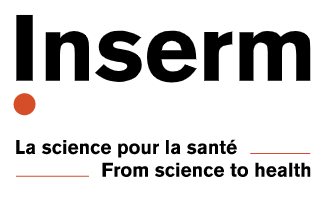Two and a half years after critics raised concerns, a dermatology journal says it has called on two French institutions to launch an inquiry into a 2017 paper.
The Journal of Investigative Dermatology has issued an expression of concern for the article, “NADPH Oxidase-1 Plays a Key Role in Keratinocyte Responses to UV Radiation and UVB-Induced Skin Carcinogenesis,” which it published in June 2017.
The authors of the group were led by Hamid Reza Rezvani, the head of the dermatology team at Université de Bordeaux, and a research director with INSERM, France’s publicly funded science agency.
According to the article’s abstract:
Our results show that inhibition of [nicotinamide adenine dinucleotide phosphate oxidase]1 activation could be a promising target for the prevention and treatment of UVB-induced skin cancer in nucleotide excision repair-proficient and -deficient patients.
But in 2020, commenters on PubPeer pointed out instances of apparent duplication and other issues with the figures in the paper and several other articles by Rezvani and his colleagues – including a 2019 article in the Journal of Investigative Dermatology titled “Loss of Epidermal HIF-1α Blocks UVB-Induced Tumorigenesis by Affecting DNA Repair Capacity and Oxidative Stress.”
The expression of concern reads:
The Journal of Investigative Dermatology has become aware of, and the corresponding author has acknowledged, issues with some figures in this publication. At least one figure (Figure 4b) is inaccurate, and the accuracy of some others cannot be substantiated because corresponding primary data cannot be located. This calls into question the validity of some of the results that have been reported. The Editor has contacted the University of Bordeaux and INSERM and suggested that one or both institutions undertake independent investigations to ascertain the validity of the results reported.
The paper has been cited 28 times, according to Clarivate Analytics’ Web of Science, including seven times since the PubPeer comments appeared in November 2020.
Rezvani, who at the time the paper was published was an inventor on a patent related to the work along with two of his co-authors, did not immediately respond to a request for comment. However, in November 2020 he posted on PubPeer, acknowledging the problems with the figures in the 2019 article on oxidative stress:
The comment is correct. This was based on an error when assembling the dot blots. Of note, three projects were running at the same time in laboratory: NOX project, Tfam project and HIF project. They were published respectively in Raad el al JID 2017, Hosseini et al Cell Rep 2018 and Mahfouf et al JID 2019. In the attached raw blots you find the right regions that should be used in each article. We regret deeply for these mistakes. However, the raw blots document that the scientific findings shown in these articles are correct. Furthermore, it should be noted that, in addition to dot blots, we have used several methods, including immunohistochemistry, HPLC, and flow cytometry, for analyzing the DNA repair efficiency. The obtained results from different methods complete and confirm each other. …
Rezvani provided additional detail about the composition of the images, and added:
You find the original blots for s4G published in Hosseini el al 2018. As you appreciate, the part of CPD has been used correctly. Unfortunately, the Sybr Green part that used was not correctly chosen and should be replaced with the corrected one. We are contacting editorial office to correct this error. However, this error does not change the message of this figure (restoring the Tfam ablation-mediated decreased DNA repair capacity upon supplementation with uridine).
We apologize again for these mistakes, which might have misled careful readers of our papers.
The journal has issued a correction for the paper, which reads:
The Journal of Investigative Dermatology has become aware of, and the corresponding author has acknowledged, an inaccuracy in Figure 1b in this publication. A portion of the figure was previously published in the Journal in 2017, and this image was reportedly included in the 2019 publication via an inadvertent error. The Editor has concluded that this explanation is plausible, and thus publishes this corrigendum accompanied by a revised version of the figure.
Like Retraction Watch? You can make a one-time tax-deductible contribution by PayPal or by Square, or a monthly tax-deductible donation by Paypal to support our work, follow us on Twitter, like us on Facebook, add us to your RSS reader, or subscribe to our daily digest. If you find a retraction that’s not in our database, you can let us know here. For comments or feedback, email us at [email protected].

I am not optimistic that INSERM would perform an aggressive investigation, based on past PubPeer responses from some authors affiliated with them, and the seeming absence of any interest from their ethics team to potential problems.
https://pubpeer.com/search?q=Christel+Guillouf
https://pubpeer.com/search?q=Patrick+raynal
Ditto. My personal experience with INSERM (a case of blatant plagiarism) is that they are simply a paper tiger, with no apparent interest in policing scientific ethics.
Patrick Raynal is listed as a research director (DR2) at INSERM (according to his Google Scholar profile).